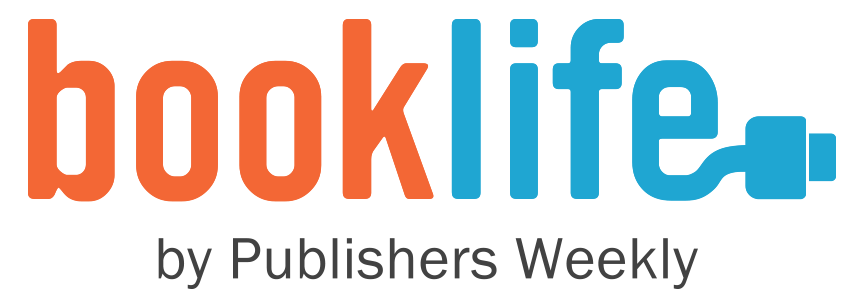Readers will be moved by Eddie’s first-person narration transporting them into his life, thoughts, and emotions as he processes his experiences and how they relate to the people around him. He is movingly honest, describing his father’s determination that he’s able to keep up with his peers in every way, played out in such scenes as Eddie being forced into a boxing ring at a local gym to learn how to defend himself against an experienced fighter. Despite those moments, and the misunderstandings that often pop up during his interactions with others, Eddie harbors a deep sense of the love surrounding him, echoing throughout that his family and friends just want him to “try my best.” When he’s placed in public school—and exposed to racist, ableist peers—he quickly finds comfort in the cross-country team, his school friends Jimmy and Sandra, and a mysterious character called El Indio, who lives nearby Eddie and regales him with stories of his Raramuri ancestors.
Middle grade readers will find Eddie’s straightforward self-exploration rich with emotional detail and candid observations. His curiosity and desire to find a safe, positive place in the world is infectious, and his message—that there is nothing more special than being loved for who you are—inspires as much as it comforts.
Takeaway: Moving story of a boy with cerebral palsy finding his voice.
Comparable Titles: Jamie Sumner’s Roll with It, R.J. Palacio’s Wonder.
Production grades
Cover: B+
Design and typography: A
Illustrations: N/A
Editing: A
Marketing copy: B
Richardson’s clean, fresh prose draws the characters and events in deft strokes, starting with Scott, of course, but also pulling in his friend Burr, with his quirky love for dismantling devices and crafting unique contraptions out of them—an engaging, lovable addition to an already appealing cast. Scott’s other friends—James, who wants nothing more than to be the “big cheese” everywhere he goes, and Marty, “a bit of a flat tire who was usually a day late and a dollar short”—pitch in with tracking down the firebug, as does Scott’s draft-age older brother Erik and sister Greta. Readers will find Richardson’s domestic scenes—with a stereotypical strict father and more approachable, lenient mother—and the family gatherings around the radio, listening to their favorite shows and the news, both nostalgic and relatable.
Through a tense atmosphere of mystery and suspense, Richardson’s needle of suspicion rises, eventually pointing, successively, at two people who are emotionally close to the protagonist. The denouement also richly pays off the created suspense, and Richardson ties up the loose ends neatly. Perhaps most remarkable are the novel’s nuanced responses to the war, from heroic to pacifist, delivered in a non-judgmental and empathetic way, providing its intended young audience with a means of forming their own opinions.
Takeaway: Suspenseful WWII mystery rich with empathy.
Comparable Titles: Sherri L. Smith’s Flygirl, Cynthia Kadohata’s Weedflower.
Production grades
Cover: A-
Design and typography: A
Illustrations: NA
Editing: A
Marketing copy: A-
Olson starts with her own story, of a heartbreaking childhood that spurred her empathy and kindness for the world around her, and later takes on the stigma that comes with experiencing homelessness—one of the driving reasons she founded Family Promise, as she notes the redemptive value in reaching out: “When we take the time to honor and dignify the humanity in others, notably the most vulnerable among us, our own humanity begins to shine like never before.” That concept—that every person, regardless of their circumstances, is a valued human being—radiates through the many narratives she shares from clients, and her urge to lend a helping hand will inspire readers to do the same in their own lives.
The straightforward message and universal positivity of Olson’s writing makes it easy to internalize, though somewhat repetitive, but there are several eye-opening moments throughout that resonate—particularly Olson’s story about the accident that led to her current disability. Olson’s work has been ongoing for decades, but the basic concepts here still apply to contemporary times, including her ideas listed at the book’s end on simple ways to help others. Olson closes with a list of volunteer organizations to help readers to take action.
Takeaway: Call-to-action on volunteering to help people experiencing homelessness.
Comparable Titles: Kevin F. Adler et al.’s When We Walk By, Tracy Kidder’s Rough Sleepers.
Production grades
Cover: B
Design and typography: A
Illustrations: NA
Editing: A
Marketing copy: A-
The vivid descriptions of Winslow’s small-town life, particularly its annual fair, give the story a warm, inviting atmosphere, as does Molly’s devotion to her students, whether she’s helping them with their literacy struggles or becoming involved in their troubled families. Likewise, Molly’s friendships with Bertie and the other Winslow residents prove uplifting. Relatably, Molly yearns for a happy marriage like her loving parents had, and her occasional conversations with God show her inner turmoil as she seeks guidance.
Tension comes from Joe’s possessiveness of Molly and Eva, including his jealousy when Molly pays attention to other men, while Molly must also face her own jealousy, especially as Eva is up to what Molly thinks of as “her own tricks." The story loses some momentum as it emphasizes school procedures, lesson planning, board of education meetings, and the canning of food. Goodwin demonstrates, though, the nourishing aspects of such community-minded work. It’s through such labor that Molly, who wishes early on for “the wisdom to help her students,” begins to flower, making a surprise connection with a man in her bible study group, and discovers how to help herself, too. The sweet ending will satisfy lovers of cozy, slice-of-life romances with Christian themes.
Takeaway: Small-town romantic slice-of-life of love, faith, and education.
Comparable Titles: Katie Powner, T.I. Lowe.
Production grades
Cover: A
Design and typography: A
Illustrations: N/A
Editing: A
Marketing copy: A






